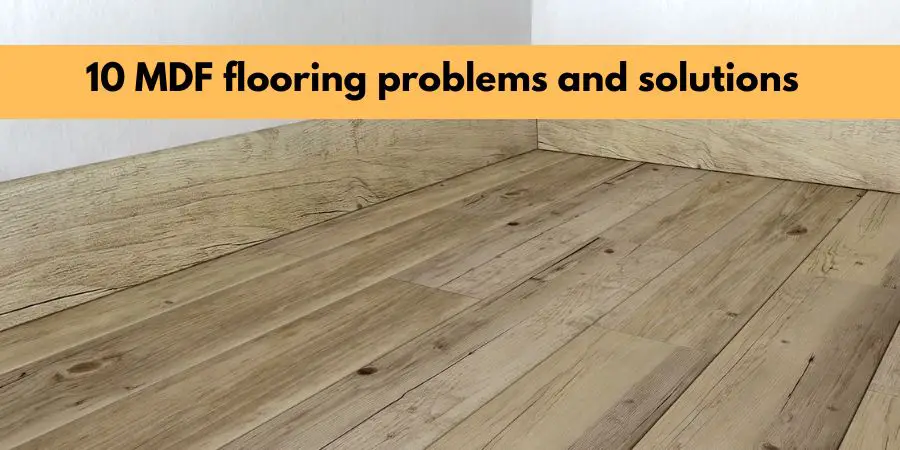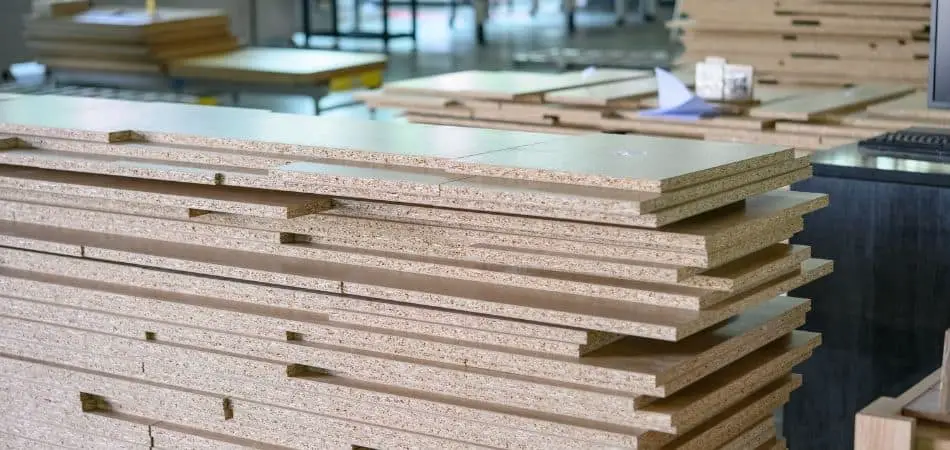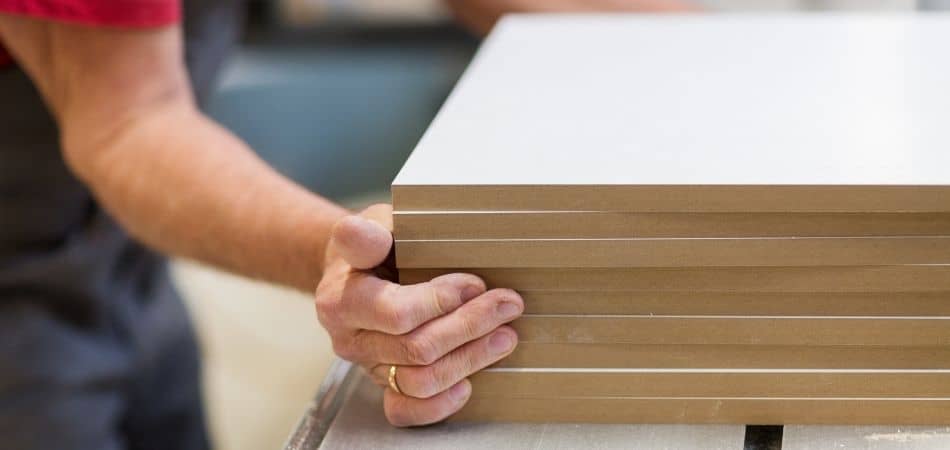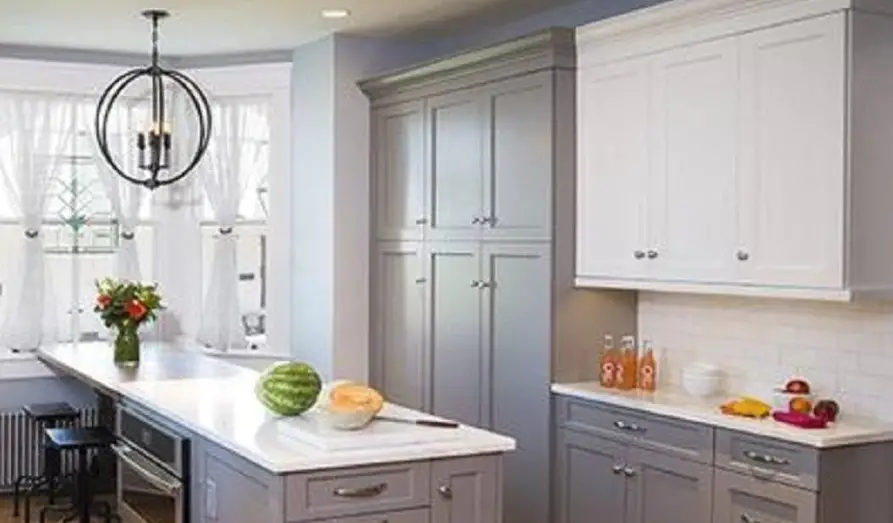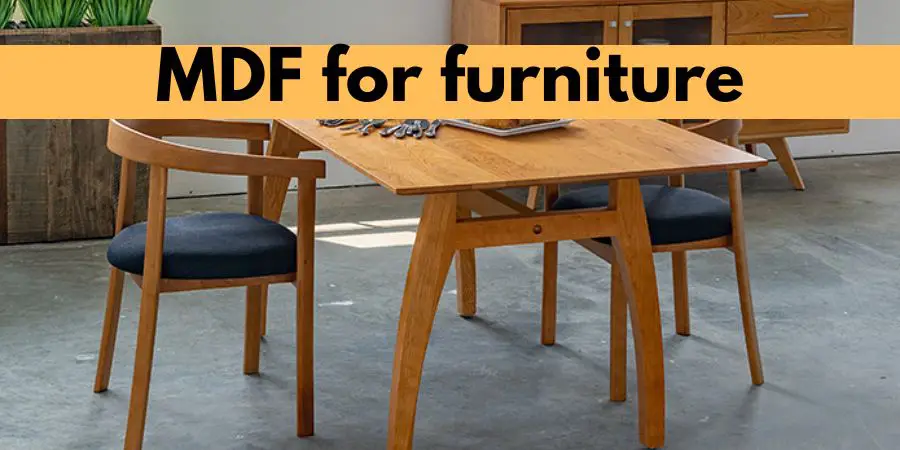MDF (medium-density fiberboard) is a popular material for flooring due to its durability, affordability, and versatility. However, like any other flooring material, MDF can also have its fair share of problems. In this blog post, we will discuss ten MDF flooring problems and their solutions.
Table of Contents
Problem #1 Swelling
One of the most common problems with MDF flooring is swelling. This occurs when the material absorbs moisture from the environment, causing it to expand and distort.
Maintaining a stable and dry environment is important to prevent swelling. Installing a moisture barrier or ventilation system can help prevent moisture from getting trapped underneath the flooring.
Problem #2 Warping

Warping is another problem that can occur with MDF flooring. This occurs when the material bends or twists, causing gaps between the boards.
To prevent warping, it is important to install MDF flooring on a flat and level surface. You can also use screws or nails to secure the flooring to the subfloor, which will help prevent movement.
Problem #3 Cracking

MDF flooring can also crack over time due to wear and tear. This can be prevented by choosing high-quality MDF flooring and ensuring that it is installed properly. You can also use furniture pads and area rugs to protect the flooring from scratches and damage.
Problem #4 Staining
If use a light color of MDF flooring it can be prone to staining, particularly in areas where spills or accidents occur. To prevent staining, it is important to clean up spills immediately and avoid using harsh cleaning chemicals that can damage the flooring. And use the dark color of MDF.
Problem #5 Scratching
MDF flooring can be easily scratched, particularly in high-traffic areas. To prevent scratching, it is important to use furniture pads, and area rugs, and avoid wearing shoes with abrasive soles on the flooring. Regular cleaning and maintenance can also help prevent scratching.
Problem #6 Fading
MDF flooring can fade over time due to exposure to sunlight or other UV sources. To prevent fading, it is essential to limit exposure to sunlight and UV sources. Using window coverings and area rugs can also help protect the flooring from UV damage.
Problem #7 Buckling
Buckling is a problem that can occur when the MDF flooring is not installed properly. This can be prevented by following the manufacturer’s installation instructions and ensuring that the flooring is installed on a flat and level surface.
Problem #8 Noise
MDF flooring can be noisy when walked on, particularly in areas with high foot traffic. To reduce noise, you can install an underlayment or use area rugs to absorb sound.
Problem #9 Discoloration
MDF flooring can also become discolored over time due to exposure to sunlight, moisture, or other environmental factors. To prevent discoloration, it is important to maintain a stable and dry environment and limit exposure to sunlight and UV sources.
Problem #10 Delamination
Delamination is a problem that can occur when the layers of MDF flooring separate, causing the material to weaken and become unstable. This can be prevented by choosing high-quality MDF flooring and ensuring that it is installed correctly. Regular cleaning and maintenance can also help prevent delamination.
FAQ
Q: What is MDF flooring?
A: MDF flooring is made from medium-density fiberboard, which is a composite material made from wood fibers and resin. It is a popular flooring material due to its affordability, durability, and versatility.
Q: What are the common problems with MDF flooring?
A: The common problems with MDF flooring include swelling, warping, cracking, staining, scratching, fading, buckling, noise, discoloration, and delamination.
Q: How can I prevent swelling of MDF flooring?
A: To prevent swelling, it is important to maintain a stable and dry environment. Installing a moisture barrier or ventilation system can help prevent moisture from getting trapped underneath the flooring.
Q: How can I prevent the warping of MDF flooring?
A: To prevent warping, installing MDF flooring on a flat and level surface is important. You can also use screws or nails to secure the flooring to the subfloor, which will help prevent movement.
Q: Can I install MDF flooring in a bathroom or kitchen?
A: Yes, you can install MDF flooring in a bathroom or kitchen, but you should take extra precautions to prevent moisture damage. Installing a moisture barrier or ventilation system can help prevent moisture from getting trapped underneath the flooring.
Q: Can MDF flooring be sanded or refinished?
A: MDF flooring cannot be sanded or refinished, as it does not have a wear layer like hardwood flooring. Instead, you may need to replace the damaged boards or consider using area rugs to cover up any imperfections.
Q: How long does MDF flooring last?
A: The lifespan of MDF flooring depends on various factors such as the quality of the material, installation, and maintenance. With proper care, MDF flooring can last up to 20 years or more.
Q: How can I clean and maintain MDF flooring?
A: To clean and maintain MDF flooring, you should avoid using harsh cleaning chemicals that can damage the flooring. Instead, use a damp mop or soft-bristled brush with a mild cleaner to remove dirt and debris. It is also important to wipe up spills immediately and use furniture pads and area rugs to protect the flooring from scratches and damage.

